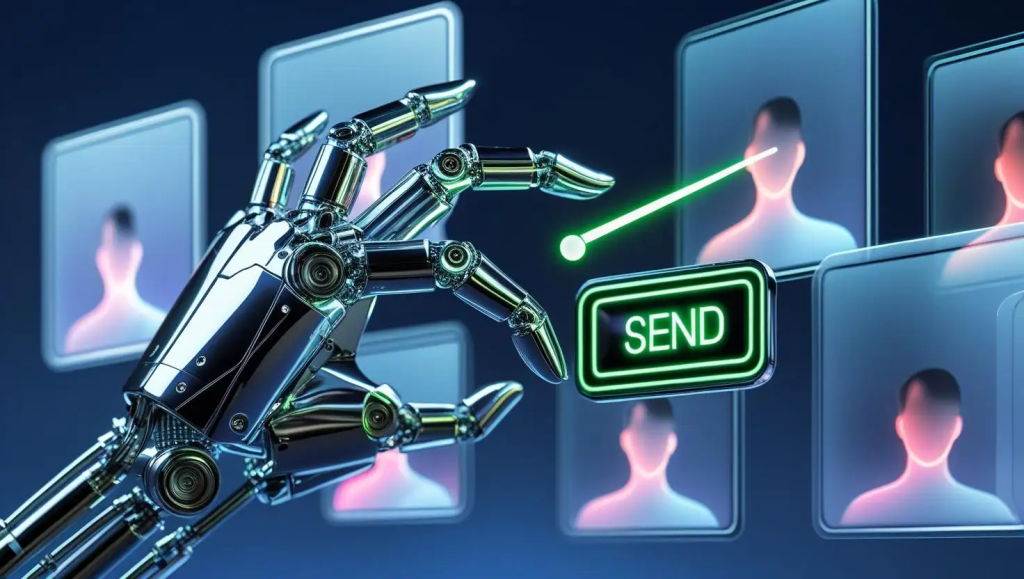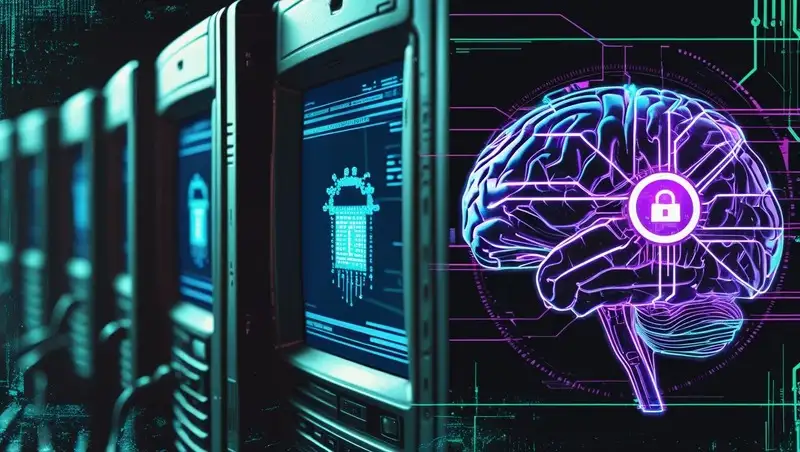AI-Powered Threats vs AI-Driven Defense: The New Arms Race in Cybersecurity

Hoplon InfoSec
05 Jul, 2025
Cybersecurity in 2025 has officially crossed a threshold. The most dangerous attackers are no longer just skilled humans behind keyboards—they are automated, AI-enhanced adversaries that learn, adapt, and scale faster than any human team can. Meanwhile, defenders are responding with their own AI-driven detection, response, and predictive systems. This new landscape represents a digital arms race, where artificial intelligence is both the threat and the shield. The outcome will determine the future of cyber-resilience, trust, and digital sovereignty.
In this rapidly evolving environment, human ingenuity alone is insufficient. The sheer volume of data, speed of operations, and complexity of systems demand a hybrid approach, where humans and machines operate in tandem. The challenge is no longer just technological; it’s organizational, ethical, and strategic.
How Cybercriminals Are Using AI

Threat actors are weaponizing AI in several disturbing ways—and most are already active in the wild. The goal is simple: use automation, intelligence, and deception to breach systems faster and more efficiently than ever .
1. AI-Generated Phishing at Scale
Gone are the days of broken English and poorly worded scam emails. Today’s attackers leverage generative language models (LLMs) to craft targeted, contextually accurate spear-phishing emails. These messages mimic internal communication styles, reference real projects or people using data scraped from social profiles, and adjust tone and urgency based on a recipient’s hierarchy and industry. Some campaigns even incorporate dynamic scripting: if the victim replies, the AI generates real-time responses to maintain the deception longer and increase click-through rates.
2. Deepfakes and Voice Cloning
AI-powered deepfake videos and voice impersonation tools have grown more realistic, enabling attackers to carry out CEO fraud or impersonate help desk staff. In 2025 alone, numerous recorded incidents have involved deepfake voices impersonating senior executives to authorize wire transfers or reset access credentials. Attackers can now replicate speech nuances, pitch, accent, and idiosyncratic phrases, making it extremely difficult for regular employees to distinguish genuine voices from fakes.
3. Malware Optimization and Evasion
Modern malware isn’t written; it’s trained. AI-driven malware can generate polymorphic variants on the fly, randomizing codes to evade signature-based antivirus tools. These malware agents can also detect sandbox environments and alter execution to avoid detection or adapt their behavior based on the host operating system and security configurations. In some cases, they even self-optimize post-infection to maximize impact and persistence.
4. Automated Reconnaissance and Target Selection
AI tools are now capable of performing reconnaissance with unprecedented precision. By scraping public domains, GitHub repositories, job boards, and social media, AI systems can map entire company infrastructures, identifying misconfigured cloud buckets, outdated software versions, and leaked credentials. These tools prioritize high-value targets and generate customized attack strategies automatically, reducing the need for manual planning and decision-making.
AI on the Defense Side: Building Smart Shields
While offensive AI tactics are terrifying, defenders are embracing their own AI-powered capabilities. In response, AI-driven cybersecurity solutions have become vital and, in some realms, indispensable.
1. AI-Based Threat Detection
Security platforms use machine learning and anomaly detection to model normal user and system behavior, then trigger alerts when deviations occur. Examples include sudden lateral movement across systems, high-frequency access to sensitive data, or repeated authentication failures. These AI systems adapt continuously, refining baseline behavior to reduce false positives over time.
2. Automated Incident Response (SOAR + AI)
Security Orchestration, Automation, and Response (SOAR) systems use AI to triage and prioritize alerts intelligently. They recommend or automatically execute containment measures, such as blocking suspicious IP ranges or quarantining files, based on real-time analysis. This feature reduces mean time to response (MTTR) dramatically and ensures consistent, rule-based handling of critical threats.
3. AI-Enhanced Endpoint Detection and Response (EDR)
Leading EDR platforms use machine learning to detect ransomware-like behaviors, such as sudden encryption of multiple files or unusual command patterns. When suspicious activity is detected, the system can preemptively shut down processes, isolate machines, or initiate rollback protocols. Some EDR systems also maintain journals of changes, enabling automated reversal of malicious modifications.
4. Threat Intelligence Enrichment
AI excels at ingesting massive threat intelligence feeds, correlating data from global sources, and producing actionable insights. Instead of overwhelming security analysts with raw data, AI-powered platforms distill intelligence into contextual risk alerts, recommend patching priorities, and even identify threat actor motivations based on attack patterns. This enhances situational awareness and enables a proactive defense posture.
The Tipping Point: Why This Arms Race Matters Now
AI in cybersecurity is now essential for maintaining security, no longer a futuristic concept. Several converging trends have accelerated this shift:
- Democratized AI tools: Open-source models and low-code platforms have lowered the entry barrier for attackers to develop intelligent tools.
- Automatable operations: AI enables attackers to automate everything from attack vector scanning to execution and evasion.
- Alert fatigue: Security teams are overwhelmed by alert volumes; AI can triage and escalate key events faster than humans.
- Adaptive adversaries: AI-driven attackers learn, optimizing tactics mid-attack, which makes static defense tools obsolete.
Ultimately, the dynamic between attacker and defender has changed. Success now belongs to those who can implement AI-driven systems and simultaneously ensure they are guided by informed human oversight. The age of manually managed antivirus and rule-based alerts is officially over.
Real-World Example: AI-Driven Ransomware in Action

In May 2025, a sophisticated ransomware strain known as “BlackCircuit” infected more than 40 organizations across North America. Analysts identified unique AI-driven capabilities:
- The ransomware mapped internal networks to locate backup servers, domain controllers, and high-value data repositories.
- It automated the targeting process, choosing systems most likely to inflict operational disruption.
- Using sentiment analysis on communications tools like Slack, it chose high-impact times, like Monday mornings or before board meetings, to execute encryption routines.
Defenders were blindsided. Standard AV tools did not detect the threat until after encryption began. Recovery required mounting backups and rebuilding systems from scratch, leading to over $96 million in combined downtime and ransom payments.
This case demonstrates how AI transforms ransomware from a blunt weapon into a precision tool, maximizing damage while minimizing exposure and detection.
Ethics and Unintended Consequences
With great power comes enormous responsibility. As defenders adopt AI, they face complex ethical and operational decisions:
- Offensive AI tactics: Should defenders deploy AI to bait attackers, such as simulating fake data, honey tokens, or environment traps? Where is the ethical line between defense and entrapment?
- Autonomous decision-making: AI can revoke a user’s access or shut down a system automatically. Without human review, these actions can hurt business operations or violate legal compliance.
- Adversarial risk: Attackers may attempt AI model poisoning, injecting malicious data so that defense models misinterpret threats or shut down legitimate processes.
- Bias and fairness: AI models trained on biased datasets may fail to detect threats against certain user groups or may disproportionately flag innocuous behavior from others.
Over-reliance on AI without proper supervision could result in both false negatives and false positives, ultimately eroding trust in security systems.
Regulation Is Struggling to Keep Up
The rapid advancement of AI-powered cybersecurity tools has outpaced regulation. In the U.S., frameworks like the NIST AI Risk Management Framework and proposed CISA guidelines offer voluntary best practices, but enforcement remains sparse.
Europe’s AI Act, set for full application in 2026, introduces a risk-based framework that classifies cybersecurity tools as “high risk,” requiring documentation and transparency. However, global consistency is lacking, and auditing requirements are currently immature.
Complicating matters, cybersecurity tools trained on live enterprise data may conflict with privacy regulations like GDPR or HIPAA, particularly when AI models record or analyze sensitive communications. Without clear regulatory alignment, organizations risk both legal noncompliance and stale defenses.
Proactive companies are now engaging legal teams, privacy officers, and auditors during AI implementation to ensure compliance, in many cases, outpacing regulatory bodies in real-time innovation.
AI vs. AI: A Glimpse Into 2026

Looking ahead, the AI cybersecurity frontier will likely evolve through several emerging trends:
- Interactive AI threat hunting: Attackers and defenders using AI assistants to identify, probe, and respond to network irregularities in real time.
- AI deception techniques: Organizations deploying synthetic environments that generate fake data flows to mislead attackers, buying time for detection and counterattack.
- Adaptive AI defenses: Systems that continuously revalidate user identities and network behavior; an AI-driven zero-trust model at scale.
- Adversarial AI: When attackers manipulate input data such as traffic spikes, API calls, or telemetry to corrupt defense systems’ predictive accuracy.
In this unpredictable environment, the ability to train models on timely, accurate, and diverse data will determine which side wins in any given cyber skirmish.
What Security Teams Must Do Now
To stay ahead in this arms race, organizations must undertake the following urgent steps:
1. Invest in explainable AI (XAI): Choose platforms that provide human-readable insights into decisions: what triggered an alert and why a response was executed.
2. Pair AI with human judgment: Treat AI outputs as recommendations, not determiners. Analysts are required to verify crucial actions and guarantee adherence to business logic.
3. Implement continuous model tuning: Defenses must evolve as threats evolve; constant retraining with updated threat data is mandatory.
4. Adopt AI throughout the kill chain: Use AI to detect threats, execute responses, prioritize investigations, and support recovery.
5. Strengthen vendor vetting: Choose AI security tools from vendors with transparent practices, robust model governance, and clear incident response documentation.
By applying these steps, teams can harness AI’s speed and scale without losing human oversight or ethical responsibility.
Conclusion: Human + Machine Is the Winning Formula
The race for AI in cybersecurity is no longer hypothetical; it has already begun. While attackers are growing smarter, faster, and more efficient through AI, defenders hold a unique advantage: context, ethics, and teamwork. Overall, it won’t be the most advanced tool that wins; it will be the smartest team using AI responsibly.
While artificial intelligence may not be a panacea, skilled cybersecurity professionals can utilize it as a transformative tool. The key lies in using AI responsibly, transparently, and proactively, while preserving human intuition, oversight, and moral discretion.
As we navigate this new era, one truth stands out: cybersecurity is no longer about humans vs. machines; it’s about humans and machines outpacing tomorrow’s threats together.
Share this :